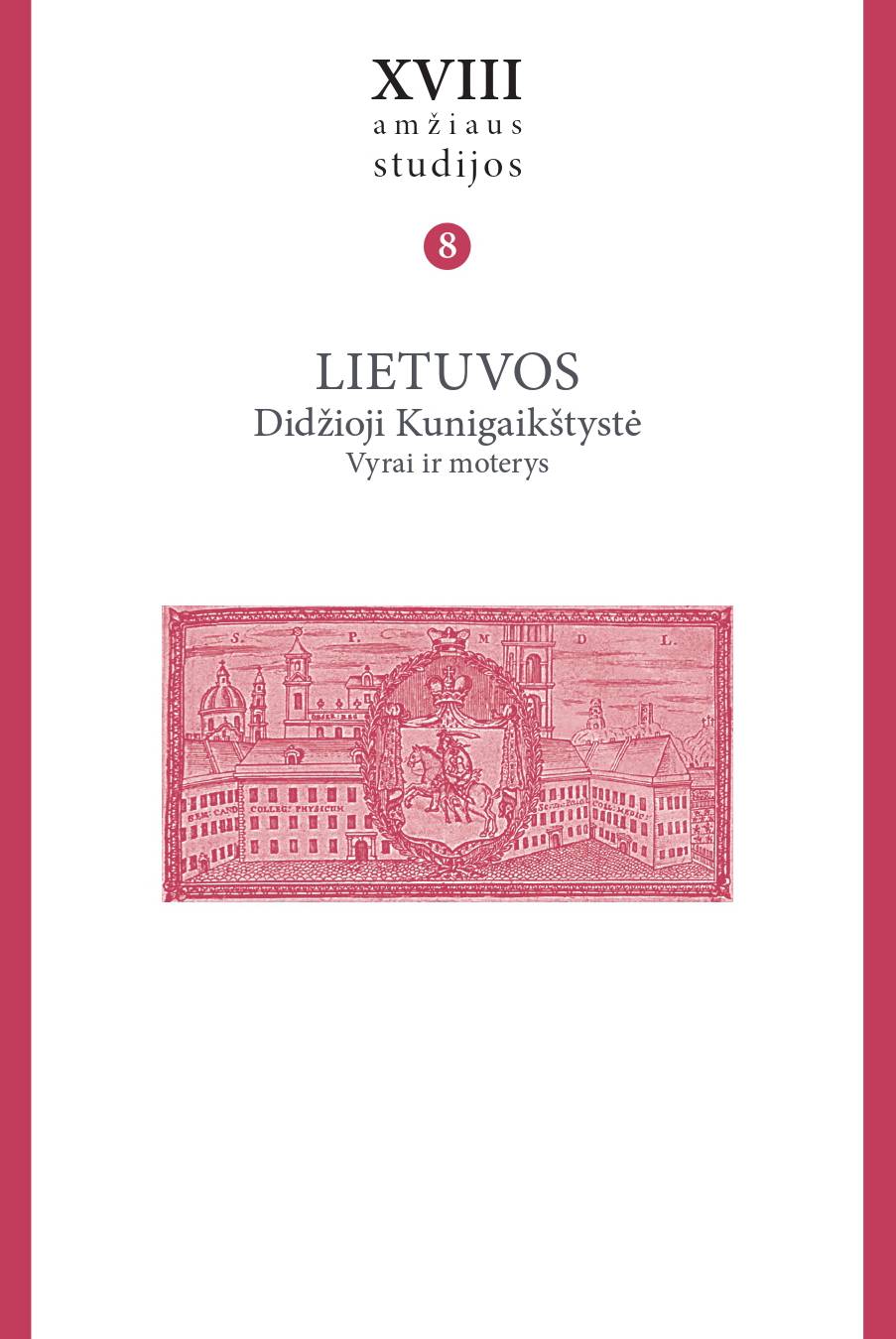Volume 8 (2022): Lietuvos Didžioji Kunigaikštystė vyrai ir moterys, December 2022

Order by:
Pub. online: 30 Dec 2022
Type: Introduction
 Open Access
Open Access
Journal:
XVIII amžiaus studijos / The Eighteenth Century Studies
Volume 8 (2022): Lietuvos Didžioji Kunigaikštystė vyrai ir moterys, pp. 8–9
Pub. online: 30 Dec 2022
Type: Introduction
 Open Access
Open Access
Journal:
XVIII amžiaus studijos / The Eighteenth Century Studies
Volume 8 (2022): Lietuvos Didžioji Kunigaikštystė vyrai ir moterys, pp. 10–12
Pub. online: 30 Dec 2022
Type: Article
 Open Access
Open Access
Journal:
XVIII amžiaus studijos / The Eighteenth Century Studies
Volume 8 (2022): Lietuvos Didžioji Kunigaikštystė vyrai ir moterys, pp. 13–18
Pub. online: 30 Dec 2022
Type: Article
 Open Access
Open Access
Journal:
XVIII amžiaus studijos / The Eighteenth Century Studies
Volume 8 (2022): Lietuvos Didžioji Kunigaikštystė vyrai ir moterys, pp. 19–25
Pub. online: 30 Dec 2022
Type: Article
 Open Access
Open Access
Journal:
XVIII amžiaus studijos / The Eighteenth Century Studies
Volume 8 (2022): Lietuvos Didžioji Kunigaikštystė vyrai ir moterys, pp. 28–45
Abstract
Pub. online: 30 Dec 2022
Type: Article
 Open Access
Open Access
Journal:
XVIII amžiaus studijos / The Eighteenth Century Studies
Volume 8 (2022): Lietuvos Didžioji Kunigaikštystė vyrai ir moterys, pp. 46–75
Abstract
Pub. online: 30 Dec 2022
Type: Article
 Open Access
Open Access
Journal:
XVIII amžiaus studijos / The Eighteenth Century Studies
Volume 8 (2022): Lietuvos Didžioji Kunigaikštystė vyrai ir moterys, pp. 76–96
Abstract
Pub. online: 30 Dec 2022
Type: Article
 Open Access
Open Access
Journal:
XVIII amžiaus studijos / The Eighteenth Century Studies
Volume 8 (2022): Lietuvos Didžioji Kunigaikštystė vyrai ir moterys, pp. 97–114
Abstract
Pub. online: 30 Dec 2022
Type: Article
 Open Access
Open Access
Journal:
XVIII amžiaus studijos / The Eighteenth Century Studies
Volume 8 (2022): Lietuvos Didžioji Kunigaikštystė vyrai ir moterys, pp. 115–129
Abstract
Pub. online: 30 Dec 2022
Type: Article
 Open Access
Open Access
Journal:
XVIII amžiaus studijos / The Eighteenth Century Studies
Volume 8 (2022): Lietuvos Didžioji Kunigaikštystė vyrai ir moterys, pp. 132–162
Abstract